By Bridget Downey, 2016 POP Intern, Rachel Baltuch, 2015 POP Intern, and Robyn Mello, POP Program Director
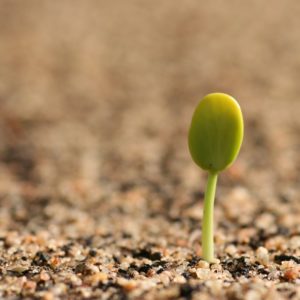
Each plant species has different conditions in which they sprout and thrive. POP focuses on perennial edibles and herbs–those which survive winters and continue producing for several years or decades. The most common perennial propagation methods are through cuttings, grafting, and division (forthcoming blog posts in this series), but the parent plants we take from all started from seed at some point. While there is a lot of information online about starting perennial flowers from seed, there isn’t a whole lot of focus on starting perennials for human consumption.
It’s important to know how to start plants from seed to increase genetic diversity and to grow strong plants adapted to specific environments. Knowledge of starting from seed can even contribute to increasing food access–because seeds from one plant are so abundant; very small for storing, saving, and sharing; and often much less expensive than seedlings or saplings to acquire. If you know how to grow, you’re one step closer to food independence, and, I assure you, you’ll start seeing seeds worth saving and experimenting with everywhere.
How do we ensure the health of each seed we start? Here we will look at how to start a variety of perennials–peaches/apricots, apples, persimmons, strawberries, blueberries, oregano, and lavender–from seed:
All of the plants listed above are perennial plants, which means they continue to grow year after year, reblooming each spring. Most perennial seeds need to go through a period of cold stratification, mimicking what they would go through in the winter, after falling from parent plants, being buried in fall leaves and by animals, then enduring winter frost and freeze, all leading up to healthy germination in the springtime. Stratification, by definition, is the process of treating stored or collected seed prior to sowing to simulate natural winter conditions that a seed must endure before germination. Without this cold and wet time seeds will not germinate at all and stay asleep within their shells. There are six types of cold moist stratification to choose from: cold water soaking, refrigeration, fall planting, winter/solstice sowing, outdoor treatment, and snow planting. You can learn more about these type of stratification at http://www.alchemy-works.com/fall_planting.html .
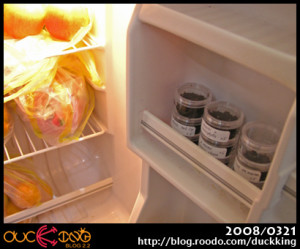
For now we will focus mainly on refrigerator stratification. First you will need a medium for your seeds which could be: peat, sand, finished compost, or paper towels. I prefer to use organic materials like peat or compost and it is most important that you have a fine grained soil, so there are no big chunks disrupting the seeds. To prepare the soil, it will need to be moist but not soaked. Next, make sure your seeds are clean and mix the medium and the seeds together, the ratio of soil to seed can be about 3:1. If you choose to use paper towels, give the seeds each a few inches all around. To store your prepared mixes, place into an airtight vessel like a glass container or plastic freezer bag. This will go into the refrigerator or freezer. Each plant does best at different temperatures and has a different germination time. We will review this with a few plants more thoroughly below.
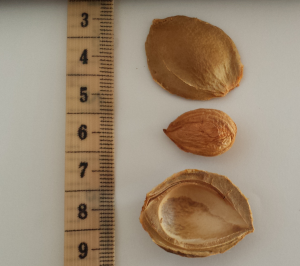
Peach and apricot seeds tend to produce trees which are very similar to their parent tree and bear similar fruit. Although commercial orchards plant grafted peach and apricot trees, a seedling tree is a fine option for a yard or community garden orchard. When choosing your peach pits, pick fully ripe fruit that you enjoy from a local orchard (or POP community orchard) later in the peach season, as those will germinate better. Clean the pit with a brush in clear water and let it dry for a few days on your counter; it will now be easier to open the hard outer shell to find the seed inside of it. You can use a vise, a nut cracker, or as a last resort, a hammer. Please be careful not to let anyone eat this seed, as it contains a small amount of amygdalin which converts to toxic cyanide when consumed. The pit might also naturally crack open for you.
Keep your peach/apricot seeds in a closed container in your refrigerator for at least 8 weeks. About 4 months before the last frost date (mid-April in Philly), you will want to start the cold, moist stratification process. Soak the seeds overnight in room temperature water and then place them in a jar filled with slightly moist potting soil, which you will store in your refrigerator. The idea is to keep them cool and moist, but not moldy. You should start to see sprouting between one and three months, depending on the variety of peach. When you see these thick, white rootlets, they are ready to plant. However, the best time to plant is about a month before last frost. If sprouting occurs before this date, you may keep them in the refrigerator until the proper time.
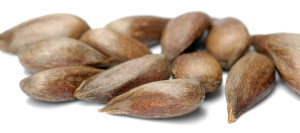
Apple seeds need to be kept between 40-50 degrees Fahrenheit for 70-80 days, and they do best between 40-41 degrees. They can be started like peaches and apricots above. Every apple started from seed will yield a completely different offspring than its parent plant, but starting apple seeds for rootstock to graft known varieties onto or growing out many apple saplings to find new cultivars are both very worthy causes. For a bit more on the subject of growing apples from seed, read up on Mark Shepard’s apple growing.
NOTE: All apples varieties are grafted, not grown from seed. A seedling apple tree, even from the tastiest apple, will only rarely produce a tree with edible fruit. Seedlings grown out and used as rootstock will lack any dwarfing quality and grow to 30 feet or more, an inconvenient size for harvesting and care for most growers, especially in urban environments.
Persimmon seeds need to be kept between 35-40 degrees for 2-3 months. Check your seeds frequently to watch for mold or drying out.
NOTE: All persimmon varieties are grafted. Seedling persimmons may or may not have edible quality fruit. In the case of American persimmons, trees are male or female and both will need to be present for any fruit production.
Blueberry seeds do best between 60 and 70 degrees fahrenheit, don’t necessarily require any refrigeration, and do well started in the winter or spring indoors. Plant the seeds about one inch deep in a shallow tray of finely ground sphagnum moss and spray with water to keep the soil moist. This process will take between 2-3 months for the blueberry seeds to germinate.
NOTE: Blueberries are commonly propagated through cuttings and quality of named fruit varieties may be lost when propagated by seed.
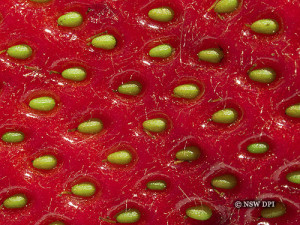
Strawberry seeds do best at below freezing temperatures (between 10-20 degrees F), so instead of refrigeration you can put your strawberry seeds in the freezer for 2 to 4 weeks and then let them thaw out at room temperature, before planting.
NOTE: Strawberries naturally self-propagate through runners and quality of named fruit varieties may be lost when propagated by seed.
Oregano seeds, similar to blueberries, like to grow in sphagnum moss. Wet the moss completely, squeeze out the excess water, then mix in seeds. Keep seeds in the refrigerator between 35-45 degrees fahrenheit for one week.
NOTE: Oregano is commonly propagated through stem cuttings. Growing from seed may result in different characteristics from the parent plant if not collected from controlled conditions.
Lavender seeds germinate best when kept in the refrigerator at 40 degrees for 4-5 weeks. Then, leave them to thaw out at room temperature for a couple of days. When planted, they do best between 75 and 80 degrees during the day and about 55 degrees at night.
NOTE: Lavender may also be propagated through cuttings, layering, or division. Growing from seed may result in different characteristics from the parent plant if not collected from controlled conditions.
While your seeds go through the stratification process, be sure to check on them frequently to make sure they do not mold or dry out. If they seem dry, add a little water and mix well. Remember to be patient and gentle with your seeds. Perennial plants generally take a much longer time to sprout and break through the soil than annuals, especially compared to fast-germinating plants like arugula and brassicas. More on germination time, potting mixes, and seedling/sapling care in future posts! Happy planting!
SUPPORT US! If you found this entry useful, informative, or inspiring, please consider a donation of any size to help POP in planting and supporting community orchards in Philadelphia: phillyorchards.org/donate.
Resources/Sources
- http://thefruitnut.com/storing-and-stratifying-american-persimmon-seeds/
- http://strawberryplants.org/2010/05/strawberry-seeds/
- http://umaine.edu/blueberries/factsheets/cultivated-lowbush-blueberries/growing-blueberries-from-seed/
- http://homeguides.sfgate.com/germinate-blueberry-seeds-40301.html
- http://homeguides.sfgate.com/germinate-oregano-21788.html
- http://everything-lavender.com/growing-lavender-plants-from-seed.html
- http://extension.psu.edu/plants/gardening/fact-sheets/home-orchard-production/growing
- http://www.motherearthnews.com/organic-gardening/growing-fruit-trees-zmaz08jjzmcc.aspx?PageId=1
- http://www.garden.org/foodguide/browse/fruit/peach/1387
- http://www.alchemy-works.com/fall_planting.html
[All photos are labeled for noncommercial reuse.]